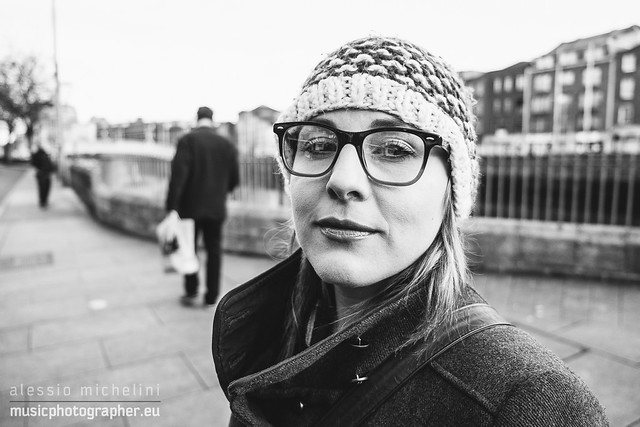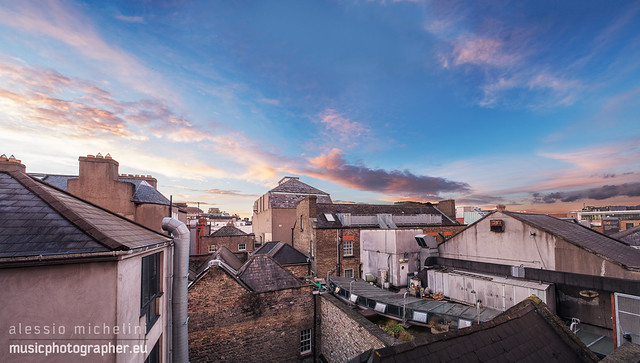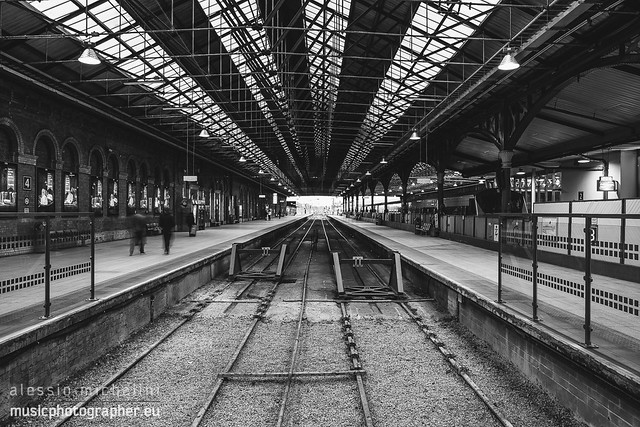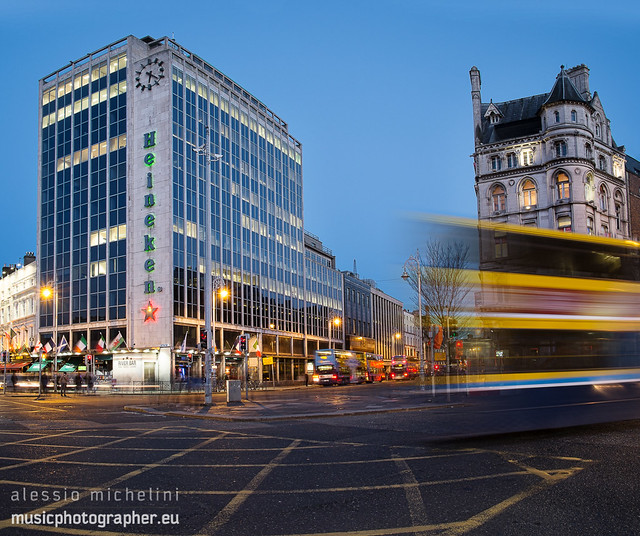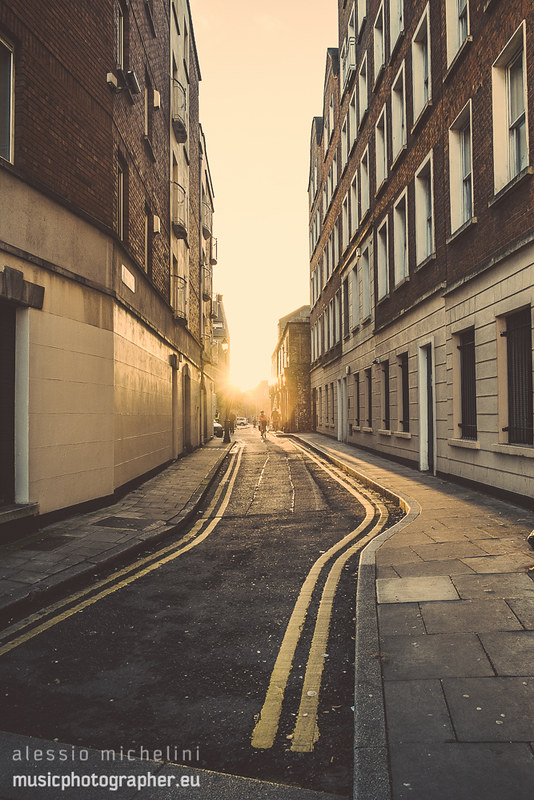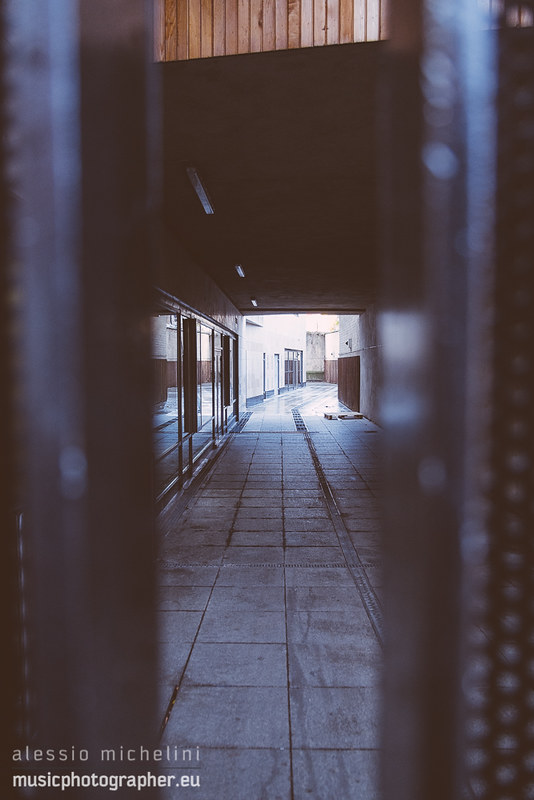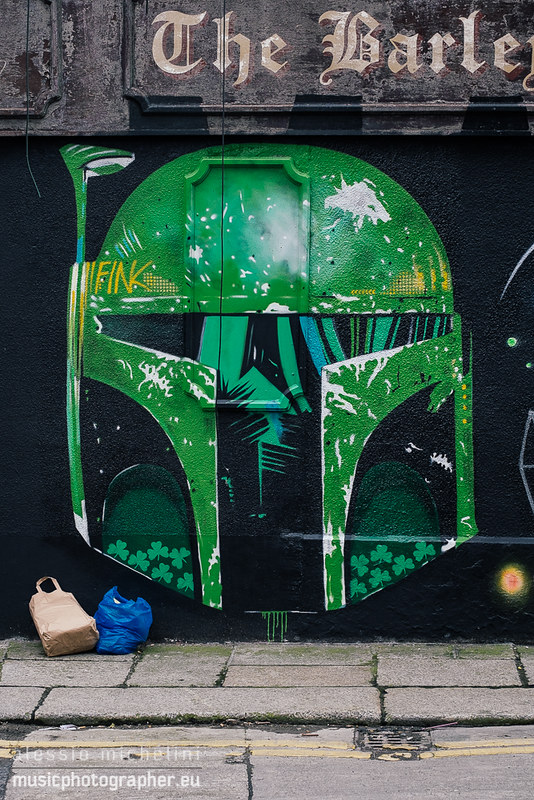Fuji X-E1 review
02 April 2014
About 3 months ago, as some of you probably already noticed it, I bought my first mirrorless: the Fujifilm X-E1 . And after these months I think I get a proper idea of how good or bad is this camera.
This is not going to be an extremely detailed review of the performances of this camera, I didn't do any scientific tests, apart a few photos to compare with my Canon 6D, it's just my experience with this camera.
Why I bought this camera
The main reason I wanted this camera was primary to have a good camera always with me, as I don't like to carry my heavy DSLR with me all the times, and maybe because I'm getting older my back told me that he had enough of heavy camera bags, so I needed something light & small, but at the same time I wanted to have a DSLR-like image quality, something that I can't have with a more traditional compact camera or even a prosumer.
Now, if you spend some minutes looking at my website, you will notice that I'm not the kind of photographer who gets stuck with one specific type of photography. I shoot music, I shoot landscapes, portraits, street, anything I find interesting, in one way or another, it ends up in a photo.
Also I wasn't looking for a replacement for my full frame DSLR, I'm not that silly, and as maybe some photographers can easily claim that they sold they DSLR in favour of a mirrorless and they are happy with it, it's not my case. For how good can be, a mirrorless camera, any of the mirrorless cameras I saw, can do what I can do with my Canon 6D, alongside the pro lenses I bought over the years; and for many reasons: the AF is not as fast as my DSLR, the low ISO and high ISO performances are not as good as my DSLR, and etc...
I wanted a camera that as a "good enough" performances for the moments I don't carry the big brother around, that's it. Something I can use mainly for street photography and some occasional landscapes or portraits, but I didn't need a replacement, but just something to fill a gap.
So after months of reading reviews online, thinking which camera would suits me better, I opted for the Fuji X-E1. I knew the X-E2 was already out, but the improvements of the newer model over the old one it didn't justify the extra money I had to pay for. So after I sold my old and beloved Canon 7D, with that money I went straight to one of the local camera store and I got the little Fuji with the kit lens, the Fujinon 18-55 f/2.8-4 XF R OIS, a bit dark lens for what I'm used to, but still a really good lens for that price.
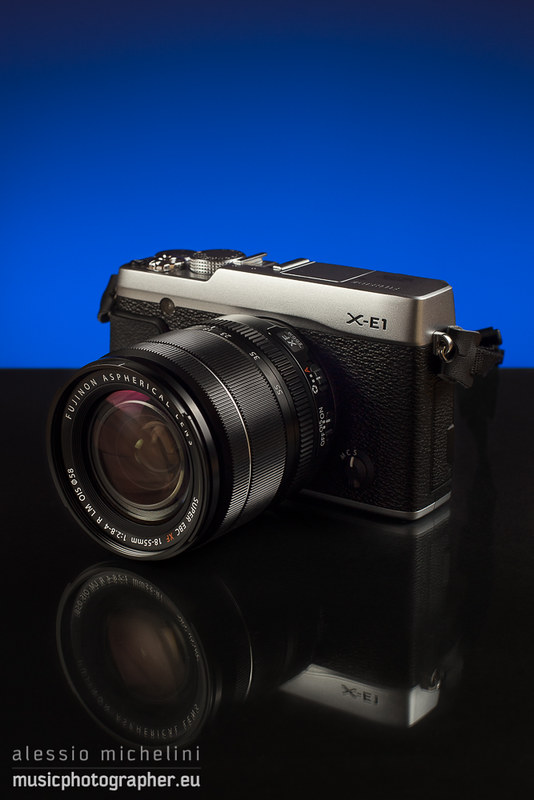
Handling & usage
This camera is not made for sport, I think it's pretty clear to anyone, and it's designed to be in this way. The controls are not superquick, changing the AF point it force you to move the eye from the viewfinder to find the right button, changing the shutter speed is the same, the aperture is probably the only one thing you can quickly change, so it's a camera that slow you down for sure. It is a bad thing? Well, yes and no.
It's a bad thing if you need something that you can set up quickly, mostly for sport I would say, but then that's the wrong camera in first place. But it's a good think because somehow it brings you back at the film age, when you had to think twice before taking a photo, and that's something we lost with the advent of the digital era.
This camera has been design for street photography, that's its main aim, and if you need a camera for that purpose, than the Fuji X-E1, and I can say that's valid for its sisters, the X-E2, X-T1 and X-Pro1 as well, it's the perfect camera.
The software of this little camera is not perfect, there are few glitches, some functions are not pretty straight forward, the quick menu is not that quick sometimes, and some other functions are not exactly clear, but overall it works, I can't really find any big complains about it to be honest, and the fact that the guys in Fuji keeps updating the firmware even for cameras that are not anymore on the market or they are fading away from it, it's definitely a plus. Yeah somebody said that they had to fix some bugs before launching these cameras on the market, but how many times you heard that a camera came out without bugs from the start? Personally never, and Fuji seems to keep an eye on what their users say, and the quick response that Fuji showed when some users complained about the light leak on their X-T1 is something that other brands should take as an example of how to behave with their costumers.
I want to spend a few lines about how this camera look. The fact that it looks like an old rangefinder camera from the 70s has its advantages: compared to a DSLR is way less intimidating, as when I go around with my full frame DSLR and related big lenses, when I'm taking a pictures of someone it looks like I'm holding a bazooka, and this makes people act less naturally, and in some cases it actually scares the subject, and I can't blame them, I would act the same if I see someone with a big black thing pointed at me, but with this little camera, subjects tends to be less scared, they think is a toy camera or an old film camera, I would say that a good 90% of the times people are surprised to find out that it's a modern digital camera. And if you are a street photographer you know that's a pretty darn factor, as you must be as invisible as possible.
Image Quality
But how is the IQ of this little camera? Overall it's impressive, I'm actually amazed by this camera, in some terms it's even better that my old Canon 7D I sold to buy it, even the kit lens is on a very high quality standard, maybe not stellar, but I'm extremely impressed by the build and the optical quality of this zoom lens, especially if you consider that I'm a fixed focal lenses guy. But as everything in life, it's not flawless.
Let's talk a bit about the sensor that Fuji uses.

The X-Trans sensor is rather unconventional, it doesn't use the same pattern used in the conventional Bayer array used practically in every other CMOS sensor on the market, Canon, Nikon, Sony, you name it, as long is a CMOS sensor, they all use the Bayer array, and as far I know Fuji is the only one with this particular configuration, and the X-Trans sensor, alongside the lack of an AA filter (which thankfully is becoming pretty common nowdays), is a pixel monster in terms of sharpness and better color reproduction, but it has a drawback, and in some cases it's kinda major. Most of the softwares have hard times with the demosaicing of the images produced with this sensor, and in some case you can get odd results in your images, especially if in your photo you get complex textures like grass, foliage, or grainy surfaces just to name a few, and while most of the times you can notice it only if you zoom to 100%, despite of what fanboys say, it's there, and in some cases it's noticeable, and I've noticed the day after I got this camera, so it's not that suttle. Now, I don't know if it's something that can be fixed via software or not, at the moment I'm writing I can't find any RAW converter that can fix it, so it's a mayor issue that I think Fuji should seriously take in consideration, and if they can fix it in the future, they'll probably end up with the best APS-C sensor on the market.
Anyway, I know it sounds a bit tragic, and a good 95% of the times you will not notice it, and apart this flaw it's a great sensor.
The ISO performances are both good and bad: bad because even at 200 ISO you get noise, it's not much, and I can say compared to my old Canon 7D (I just can't compare with a full frame sensor) on the low ISO the Canon was slightly better, but just by a notch. It's good when you look at the high ISO performance. It puts to shame most of the APS-C sensors I've seen so far, 3200 ISO are very good for a sensor of this size, and 6400 ISO are still decent, and it has no banding or colour noise as I used to see on my old DSLRs, but it has a beautiful noise, very similar to the one I get with my Canon 6D, and I can only say that I love it.
The Viewfinder & Autofocus
I have to be honest: I never liked them before. To me an optical viewfinder is irreplaceable, my very first prosumer camera was a Fuji S7000, which it was a great camera, but looking at that viewfinder was like looking at an old tv screen. In part I still think that you can't replace an optical one, especially when it comes to low light situations, but with the viewfinder of the X-E1 I've partially reconsidered my beliefs regarding the EVFs, when you have good light conditions AKA daylight, it works extremely well, and the fact that you can zoom on a specific area while manual focusing it does help, a lot. It stills struggle when you have no lights, but it's not that bad, it's a bit sluggish, but still usable.
The AF, which apparently was pretty bad at the beginning, but with the recent firmware updates now it works well, it's still far away from the performances I can get with my full frame DSLR, but pretty snappy and accurate most of the times.
The "kit" lens
Often kit lenses are essentially bottoms of bottles, they are okay if you are just getting into photography, and if closed down a bit they are "sharp enough", but they are just decent in general, and pieces of shit if you are a pro photographer. But can I say the same with this lens? I know I shouldn't talk about the lens in this review, as I supposed to talk only about the camera, but I can't refrain from talk about this lens.
Once again, I hate zoom lenses and I hate slow lenses, but this little guy it's just great. It's sharp straight from f/2.8 at 18mm, maybe it's not tack sharp as a prime lens, but it's pretty damn close to a prime lens, and I did some tests, taking a shot at the same focal length, same aperture, same ISO, same focus and on a tripod, with both the Fuji X-E1 and my way more expensive Canon 6D with the my landscape lens, the Canon EF 17-40mm f/4 L USM, which in terms of quality/price is supposed to be inline with the Fuji XF 18-55 f/2.8-4 R LM OIS, but while the performances where pretty the same on the center of the frame, on the corners of the frame was a totally different story, the Canon lens was blurry and lost plenty of details, where the Fuji one was almost as sharp as the center frame. Now, I shot both at 1/125 of a second, at f/8 (so both lenses were in the sweet spots in terms of sharpness, at 200 ISO, on the same tripod (I didn't even need to swap the quick release plate as I have two of them), focusing the same point and using a similar focal lenght (23mm on the fuji which correspond to a 35mm on a full frame, and I set the Canon at 35mm), so away from the very limits of these lenses focal length, also with that parameters and with that focus distance I was essentially in hyperfocal, so nobody can say that maybe it was blurry because the background was out of focus, no guys, it was everything in focus).
Photo taken with the Canon 6D + Canon EF 17-40mm f/4 USM L (click for larger)

Same scene photographed with the Fuji X-E1 + Fujinon XF 18-55mm f/2.8-4 R LM OIS (click for larger)

Detail of the middle left corner (Canon on the left and Fuji on the right)


Detail of the top right corner (Canon on the left and Fuji on the right)


The weakness of the X-Trans sensor, complex textures (Canon on the left and Fuji on the right)


What you can see from the images above is the problem I mentioned before of the X-Trans sensor, especially in the last one where with the shot taken with the Canon the grass is well defined but with the Fuji one the grass is a bit messy, but despite of that is way sharper than the Canon one, at least on the very peripheral part of the frame, and the difference is pretty impressive.
Now lets list what are the good and the bad things of this camera:
Pros
- Lightweight and very discrete camera
- Impressive sharpness and dynamic range
- It makes you think before you take any pictures
- It doesn't scare your subject
- Impressive high ISO performances for an APS-C sensor
- Very good light metering
- Focus peaking and focus zoom are dead handy when manual focusing
- The kit lens is a kick-ass lens
- You can easily use (with an adaptor) old manual lenses and have a good selection of lenses without break the bank
Cons
- Not mad of where the memory card is
- Low light performances of the EVF
- Low ISO performances could be better
- X-Trans sensor problems on complex textures
- AF is OKAY
Conclusions
This camera is obviously not for everybody, and it does not replace your heavy duty DSRL, but instead it completes your kit, it's the camera to bring always with you and have no regrets when it comes to image quality, it's not perfect, as I mentioned several times the sensor is great but with some flaws, but despite some of the camera limitations, I enjoyed every single time I used it, and it actually surprised me more than once for what this little camera is capable of.
If you have any question, or you just want to simply discuss about this review, please feel free to leave a comment on the box at the bottom of this page, thanks.
Down here you can find some sample photos I took with this little camera.
